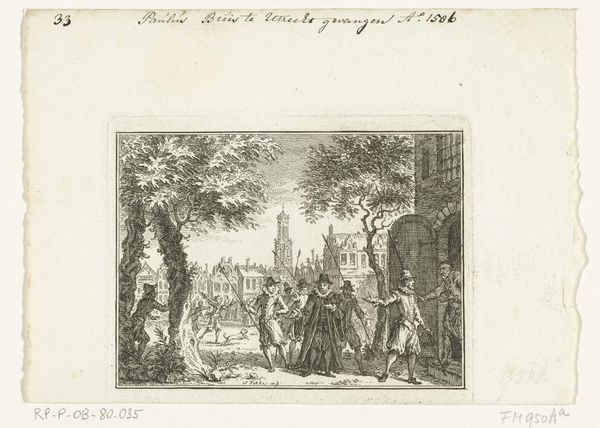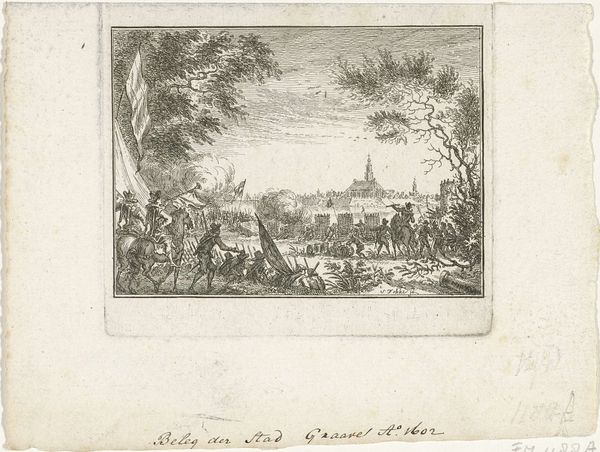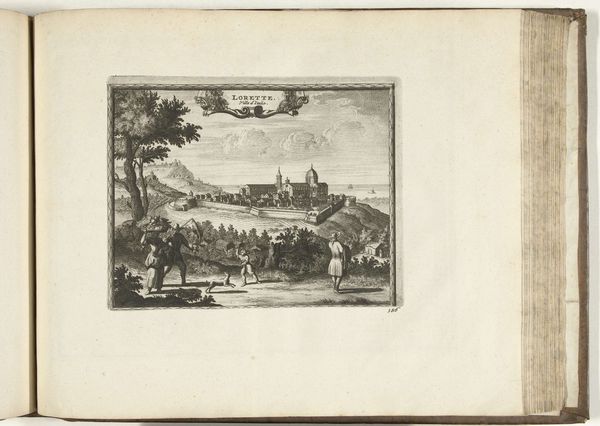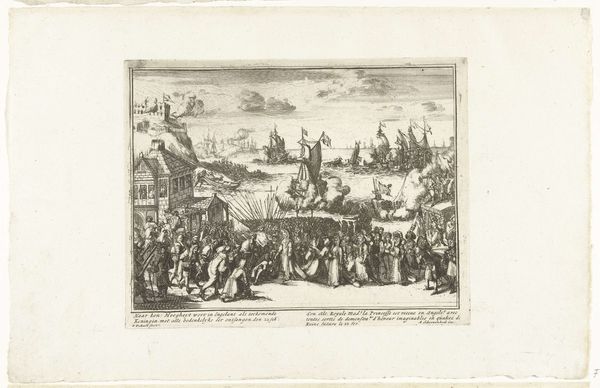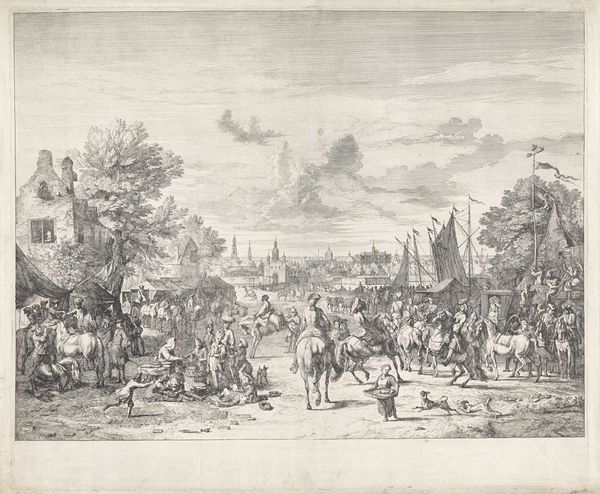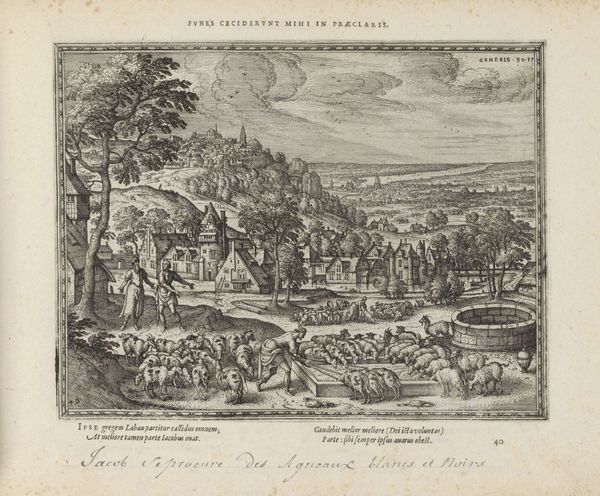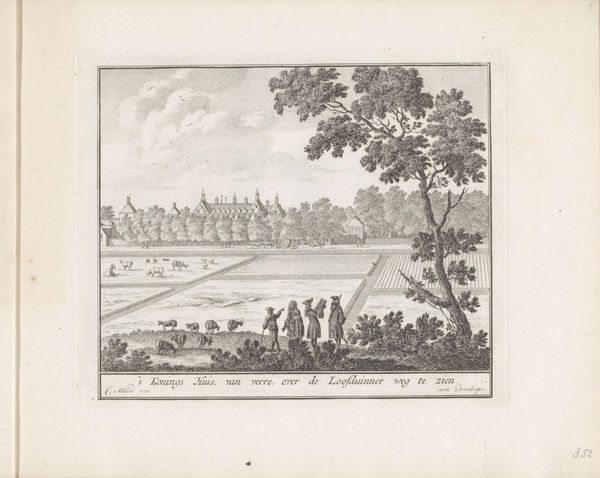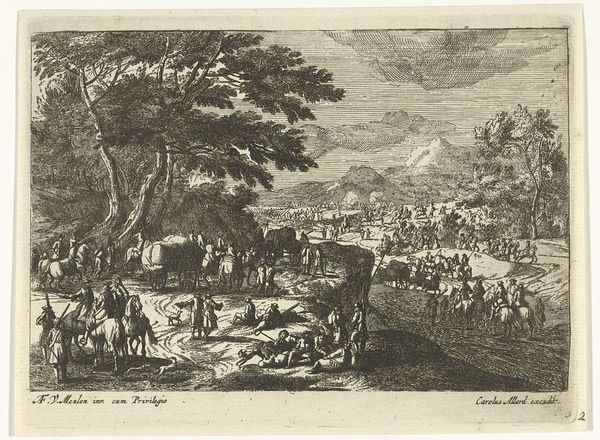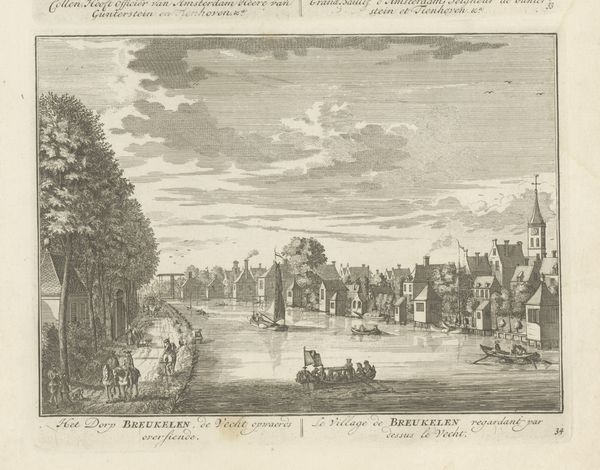
Dimensions: height 84 mm, width 106 mm
Copyright: Rijks Museum: Open Domain
Curator: Standing before us is "Openbare preek in het veld, 1566," an engraving by Simon Fokke, created sometime between 1782 and 1784. Editor: It’s rather bleak, isn’t it? Stark monochrome, a crowd huddled… there’s an undeniable air of tension, or perhaps pious anticipation, radiating from this piece. Curator: Precisely. Fokke is recreating a scene from 1566, a pivotal year leading up to the Dutch Revolt. These open-air sermons, or "hagenpreken," were gatherings for Protestant worship, defying the Catholic authorities. They represent a burgeoning resistance, a claim to religious freedom in a highly charged political atmosphere. Editor: Looking at the preacher’s makeshift platform, his raised hand, the sea of faces… it’s all about material conditions leading to that act of assembly, right? The very real human labor involved in creating the image itself is mirrored by the labor that went into the act that image portrays. The physical exertion, the carving, the printing process… It resonates with the defiant labor of the field sermon. Curator: I agree completely. And the choice of engraving itself is significant. It was a medium accessible to a wide audience, allowing these images of dissent to circulate, further fueling the burgeoning national identity, one rooted in acts of religious and political defiance. You can see those flagpoles standing, they symbolize resistance. Editor: What fascinates me are the materials themselves – the cheapness and accessibility of the printed image as a tool of revolution. Each print, a material iteration, would have served to build networks of support within the social structure, promoting discourse surrounding freedom. Curator: Absolutely. It connects with the complex intersectional issues surrounding religion, class, and political agency. These weren’t just theological discussions; they were acts of rebellion against the existing power structure, challenging traditional gender roles and providing spaces for marginalized communities. Editor: It makes you wonder about the engraver's intent as he created multiple images with sharp tools: what were the socio-political circumstances involved, beyond a superficial historical re-enactment? What are the possible ties of Fokke with resistance during the historical moment the artist found himself immersed? Curator: I find myself focusing on how it challenges us to see those linkages through today’s lens. How do current modes of artistic production either reaffirm or subvert existing hierarchies? What means do we have today, to speak freely to an audience. Editor: Considering Fokke's craft as a mirror reflecting societal challenges allows a deep comprehension of Dutch Golden Age’s complex interplay between process, artistry, and social justice, especially religious freedoms. Curator: This is one potent lens for us to examine that pivotal point in Dutch history.
Comments
No comments
Be the first to comment and join the conversation on the ultimate creative platform.

